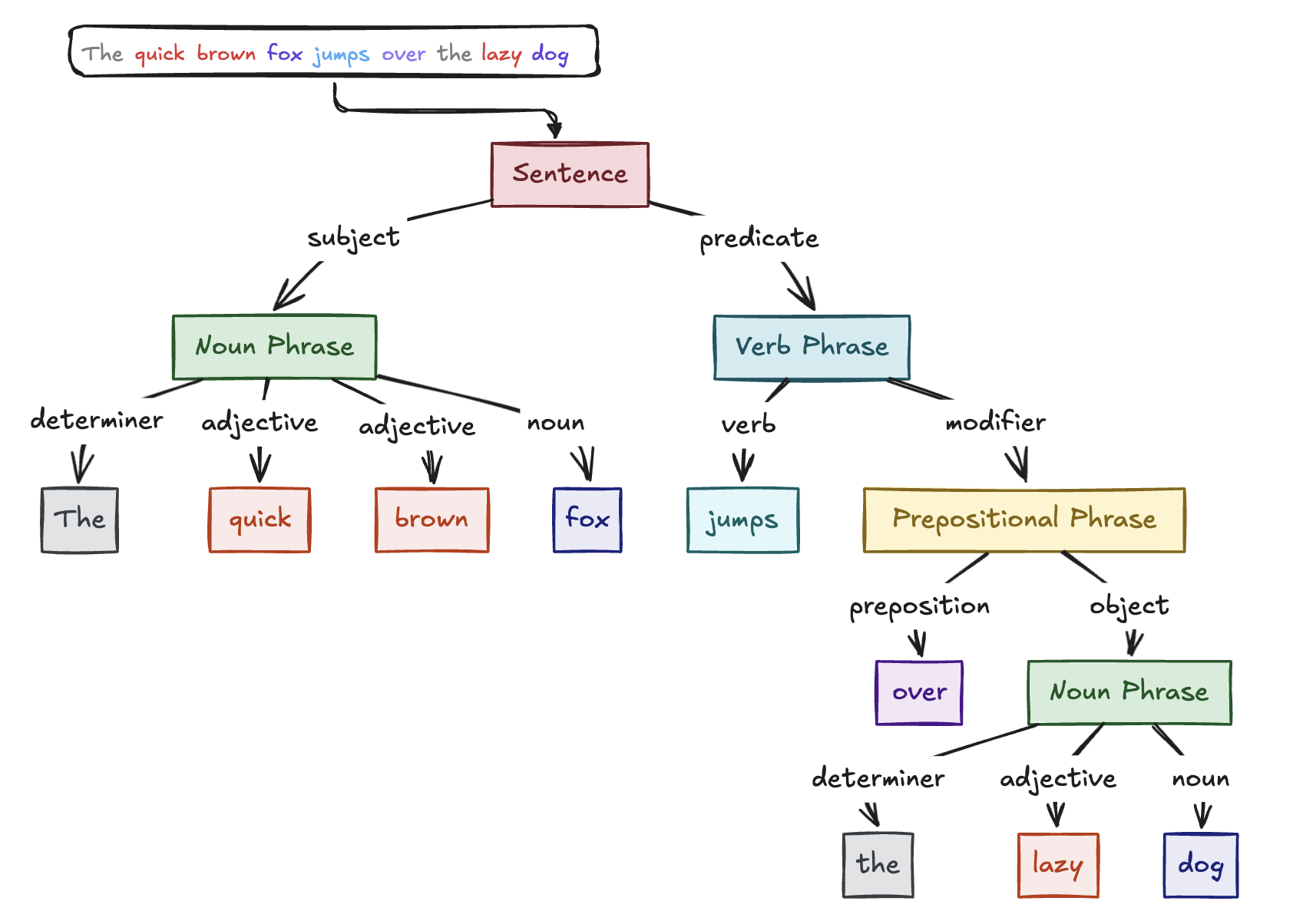While parse trees are a concept from standard data structures, they are also used in natural language processing (NLP) to represent the syntactic structure of sentences. In NLP, parse trees help in understanding the grammatical relationships between words in a sentence, which is crucial for tasks like machine translation, sentiment analysis, and information extraction.
This is also known as a Syntax Tree for fields like Formal Linguistics and Computing Theory.

For Large Language Models, parse trees can be used to guide the generation of text in a way that adheres to specific syntactic structures. This can be particularly useful in applications where the structure of the output is important, such as in legal or technical writing.
In a paper from 2022,1 researchers introduced a method called Diffusion-LM, which uses diffusion models to generate text that follows a specified parse tree. This approach allows for more controlled text generation, enabling the model to produce outputs that are not only coherent but also syntactically correct according to the desired structure.
Footnotes
Bibliography
- Li, X. L., Thickstun, J., Gulrajani, I., Liang, P., & Hashimoto, T. B. (2022). Diffusion-LM Improves Controllable Text Generation. arXiv preprint arXiv:2205.14217 [arXiv]